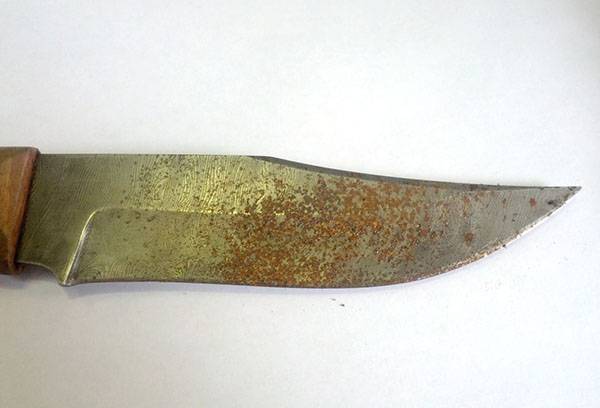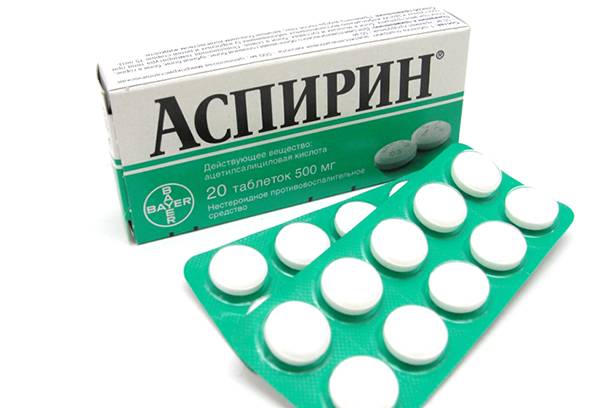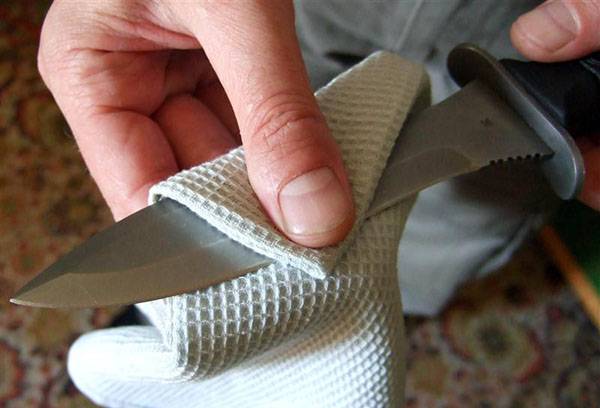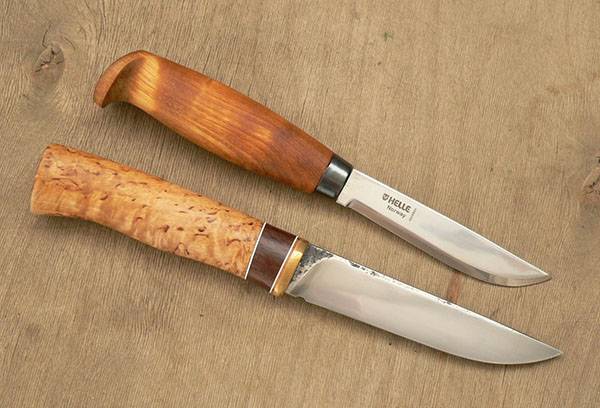How to remove rust from a knife yourself?
There are a lot of ready-made chemical compositions for removing rust (corrosion); you can get by with improvised means, especially if the item is not badly damaged.

Chemical properties of rust
In order to understand the principle of action of rust cleaning agents, you need to know what it is by nature. Chemically, it is iron (III) hydroxide, an insoluble base that is neutralized by acid. Therefore, in order to remove rust stains from a knife blade, it is necessary to treat it with a substance containing acid. Among the usual means at hand, we can recall:
- potatoes (contains oxalic acid);
- onions (various organic acids);
- vinegar (acetic acid).
There are other options that can help you get rid of this problem. Much depends on how severe the damage is. Perhaps this is a light coating, or perhaps corrosion has already formed serious pits on the smooth surface of the blade. One way or another, in order to clean a knife from rust, remove existing stains and protect it from the appearance of new ones, you need to go through all stages of the procedure.
Mechanism for removing corrosion traces
First of all, you need to assess the condition of the knife and the degree of corrosion damage. The whole procedure consists of the following steps:
- influence the steel elements of the knife with an acid-containing substance (or a special agent);
- remove traces of rust from them;
- clean the blade;
- treat with oil or wax to protect against re-damage.
If corrosion has formed shells on the surface of the blade, then you may have to resort to processing with fine sandpaper followed by polishing. However, let's look at the mechanism in more detail.
Advice
Throughout the entire process, water should not be used; special solutions, cleaning compounds, etc. should be used.
If you find rust on a knife blade, you need to do the following. To begin, mechanically remove all dirt by thoroughly wiping the knife with a rough cloth, after moistening it with cleaning liquid. Then the liquid must be applied to the blade, soak a rag with it, wrap the knife and leave in this position for several hours. As such a cleaning agent, you can use vinegar or kerosene, or you can buy a special composition, such as a rust converter.
After this time, you should unfold the knife and remove all excess using steel wool. After this, it must be wiped with a rough cloth soaked in oil and cleaned until completely shiny. To protect the knife from repeated corrosion, it must be coated with a protective agent, such as oil or wax, and then monitored, periodically cleaned, lubricated, and done this regularly.
What should you do if you find that the stains cannot be completely removed? In this case, the procedure should be repeated. You can try to remove rust in other ways, of which, fortunately, there are plenty.

Aspirin can help remove rust from a knife
Using Alternative Methods
One way - already mentioned earlier - is to remove rust using potatoes. Everything is simple here. To remove traces of corrosion from a knife, you need to stick it into a potato and leave it there for a day.Then remove the tool and wipe it with a rough cloth soaked in oil. In less advanced cases, this is a fairly effective remedy. The oxalic acid contained in potatoes reacts with iron hydroxide, neutralizing it. The process of cleaning steel from rust using onions proceeds in the same way. In this case, onion juice is applied to the blade and left for several hours, after which it should be removed along with the exfoliated rust.
You can remove rust stains in the same way using lemon juice or vinegar; you can even use ketchup for this. The principle of operation is identical to that described above. Some people successfully solve this problem with sparkling water. There is an opinion that Coca-Cola is especially suitable for these purposes, since it contains phosphoric acid. It is necessary to immerse the knife in a container with a drink for several hours, then remove it and remove the rust with a wire brush or washcloth. Finally, polish the blade and protect it from moisture using oil, wax or special products.
When fighting rust, sometimes the most unexpected things are used, for example, Alka-Seltzer or aspirin. Several tablets are dissolved in a small amount of water and a knife blade is dipped into the solution for a quarter of an hour, after which the surface is wiped with a rough cloth and the knife is treated, as in all other cases, in order to protect it from subsequent damage.
What to do with a rusty object and how to remove stains from it, what method to use for this is up to the owner of the knife to decide. Buying a ready-made product is perhaps the safest option, but it’s still worth experimenting with alternative methods, especially if the case is not too advanced.The main thing after this is to prevent rust stains from appearing again, since some of them can be difficult to remove. In this matter, prevention is everything.
Measures to prevent corrosion
They say that in order for a knife blade not to rust, it must be used more often. This expression is not without meaning. A knife that is in constant use is regularly wiped, processed, and is in plain sight. Meanwhile, a stored and not used copy is no less at risk of damage by corrosion. If you forget about it for a while and do not treat and clean the metal parts, it will almost certainly rust. The fact is that moisture is found everywhere, including in the air. Gradually settling on the surface of the blade, it will inevitably lead to the process of iron oxidation. Protective compounds, by the way, cannot retain their qualities indefinitely; they must be periodically removed, the knife cleaned and reapplied.
Many owners of professional and hunting knives avoid preventative oil treatment. It is believed that oil can enter into additional interactions with various substances and harm steel. In this case, wax has proven itself to be a more reliable remedy. In addition, a knife that is used occasionally should not be stored in a case or sheath. Any unfavorable conditions, primarily air humidity, in such a cramped space will worsen, and the damage process will accelerate. In addition, you can miss the beginning of the process by simply not seeing it. It is better to sheath the knife when it comes time to take it with you on a trip, hunting, etc.
With the right approach and sufficient attention to the subject, corrosion can be avoided.It is better to spend time preventing a problem than fighting it. Removing rust and preventing its occurrence is a painstaking process that requires regularity. However, perhaps this is one of the few cases when caring for a thing is enjoyable and has a calming effect. The smooth, polished surface of a knife is the owner’s best reward for his efforts.


unclear
write in more detail